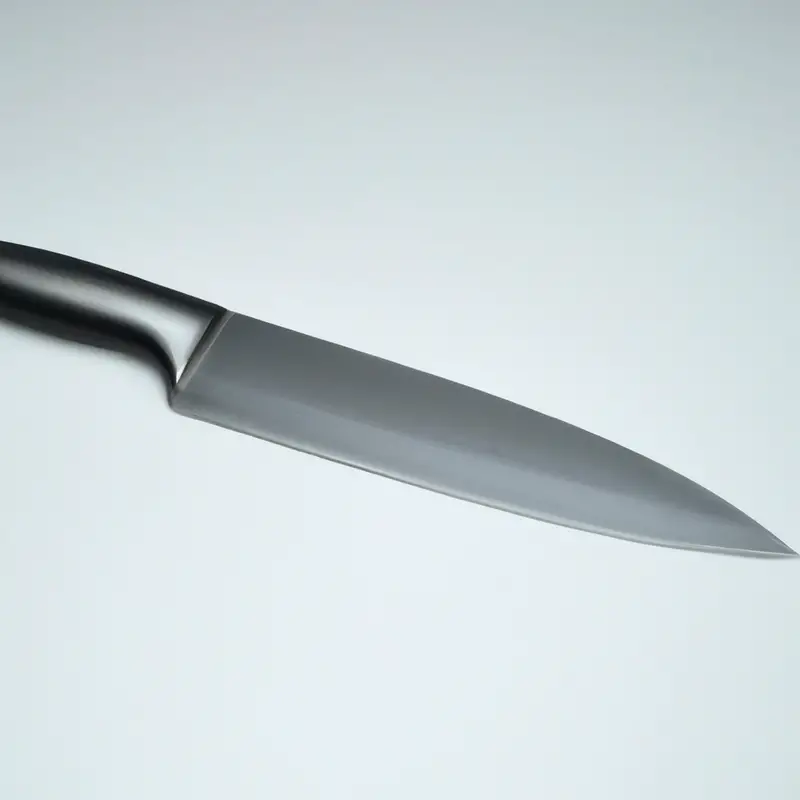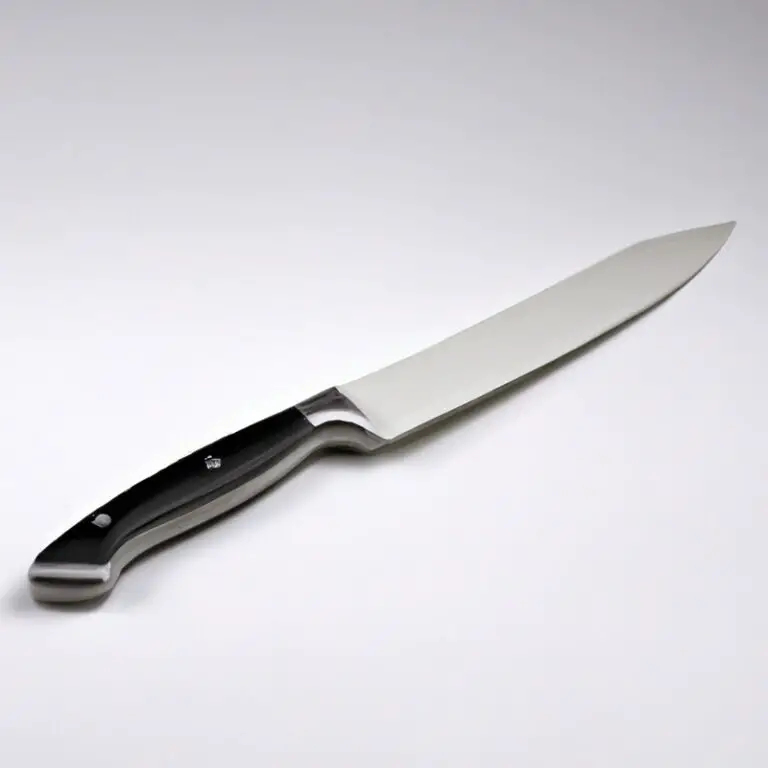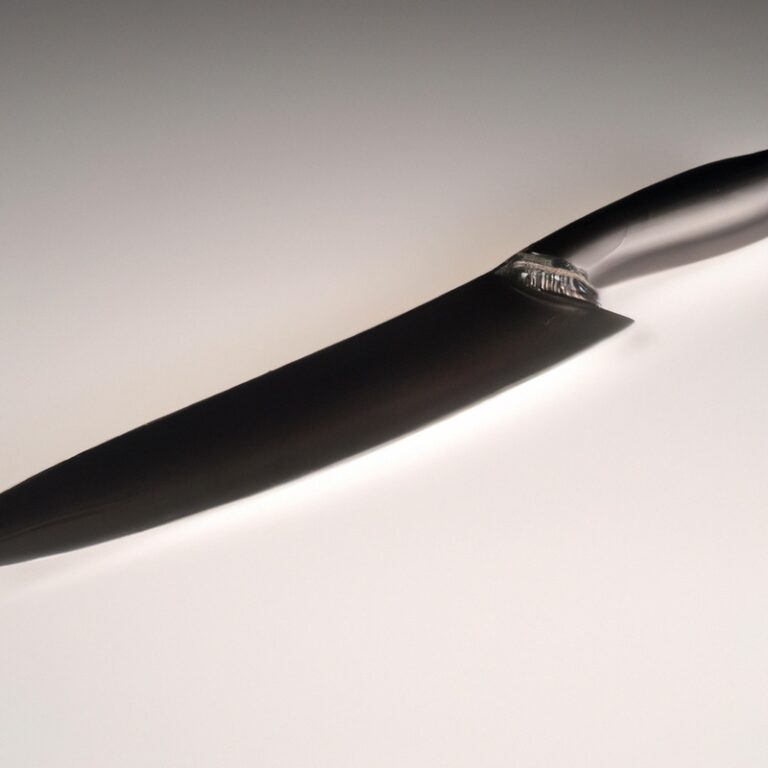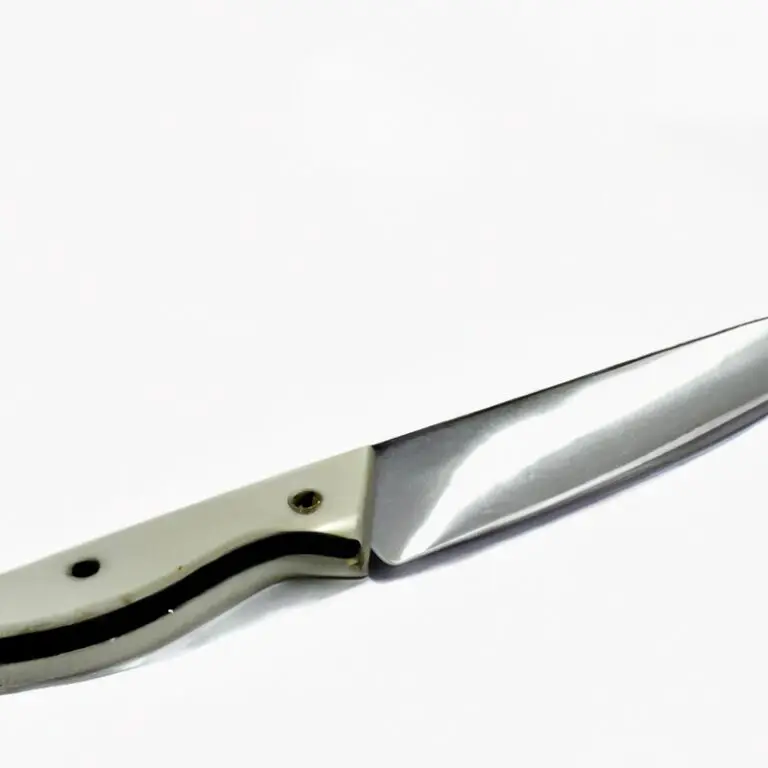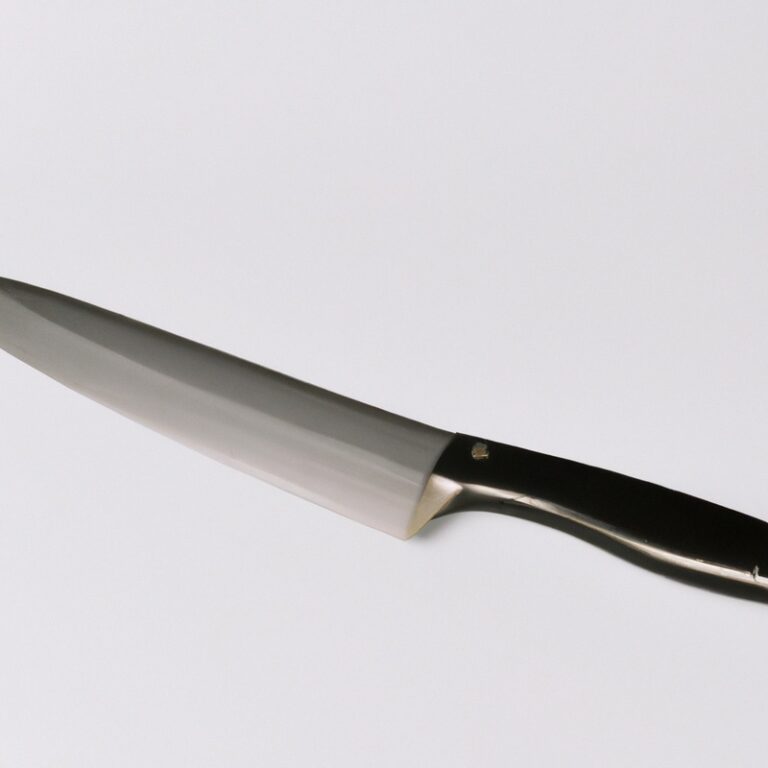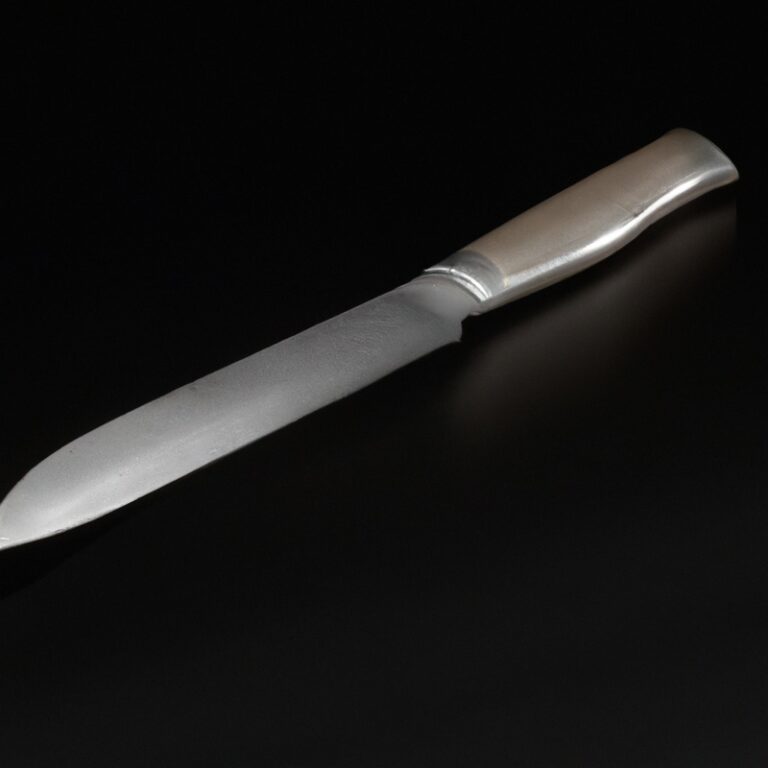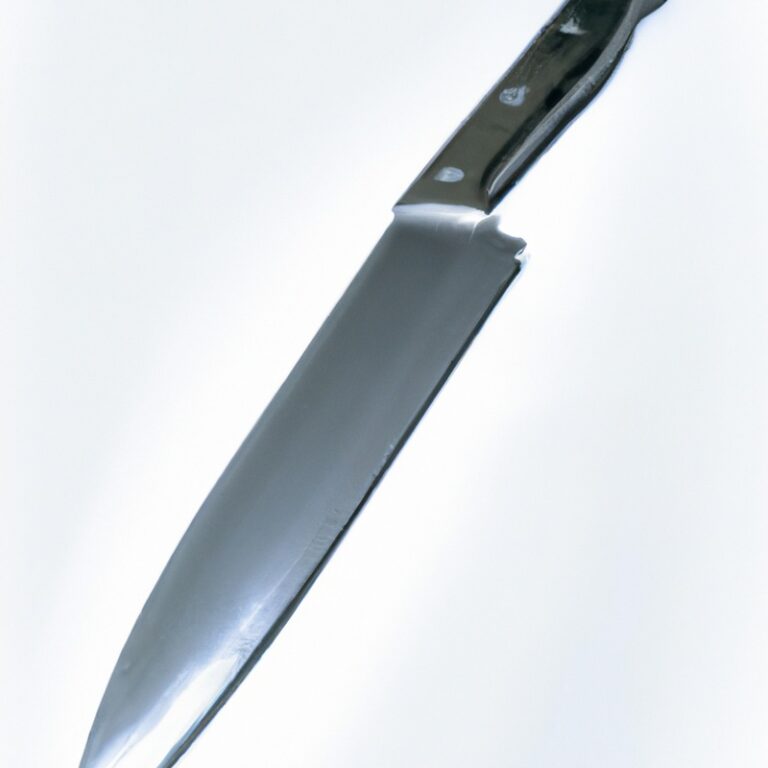How Does Knife Steel Affect Ease Of Sharpening?
Key Takeaways:
- Knife steel composition influences ease of sharpening.
- Higher carbon content in steel improves sharpenability.
- Blade hardness impacts the ease of sharpening.
- Knife steel with smaller carbides is generally easier to sharpen.
Hey there! Are you tired of struggling to sharpen your knives?
Well, you’re in the right place because today we’re diving into the world of knife steel and how it affects the ease of sharpening.
As a knife enthusiast myself, I’ve learned that the composition of the steel plays a significant role in how easily a blade can be sharpened.
From understanding the different types of knife steel to exploring factors such as hardness, blade geometry, and heat treatment, we’ll uncover the secrets to effortlessly maintaining a sharp edge.
So grab your favorite blade and let’s get sharpening!
| Steel Type | Ease of Sharpening |
|---|---|
| High Carbon Steel | Easy to sharpen |
| Stainless Steel | Harder to sharpen compared to high carbon steel |
| Tool Steel | Requires more effort to sharpen |
| Powdered Steel | Challenging to sharpen due to extreme hardness |
| Damascus Steel | Varies depending on the specific blend and hardness |
Understanding Knife Steel Composition
Common Types of Knife Steel
There are various types of knife steel used in the manufacturing of blades. Some common types include:
- Stainless Steel: Known for its corrosion resistance, stainless steel is easy to maintain and offers good durability. It is a popular choice for kitchen knives.
- High Carbon Steel: This type of steel is known for its exceptional hardness and ability to hold a sharp edge for a long time. However, it requires regular maintenance to prevent rusting.
- Tool Steel: Often used in the construction of high-quality knives, tool steel offers excellent durability, strength, and wear resistance. It is commonly found in hunting and outdoor knives.
Each type of steel has its own properties and benefits. It is important to choose the right type of knife steel based on your specific needs and preferences.
Factors Affecting Ease of Sharpening
The ease of sharpening a knife is influenced by several factors. The composition of the knife steel is one crucial aspect.
High carbon steel can generally be sharpened easily, while stainless steel may require more effort.
The hardness of the steel also plays a role, as harder steel tends to be more difficult to sharpen. The blade geometry, such as thin blades or a full flat grind, can affect the ease of sharpening as well.
Lastly, the heat treatment of the steel can impact sharpening ease.
Considering these factors can help you choose a knife that is easier to sharpen and maintain.
Hardness and Sharpening
Relationship Between Hardness and Sharpening
The hardness of a knife steel plays a significant role in its sharpening ease.
Generally, harder steels have better edge retention but can be more difficult to sharpen.
On the other hand, softer steels are easier to sharpen but tend to lose their sharpness more quickly.
It’s essential to strike a balance between hardness and sharpening ease based on your personal preferences and the intended use of the knife.
Maintaining a consistent sharpening routine and using the appropriate sharpening tools will help you effectively maintain the sharpness of your knife.
How Hardness Affects Sharpening Ease
The hardness of a knife steel greatly affects its ease of sharpening. Harder steels, such as those with a higher Rockwell hardness rating, can be more challenging to sharpen because they resist deformation.
These steels require more effort and time to remove material and create a sharp edge.
On the other hand, softer steels are easier to sharpen as they are more forgiving and deform more readily. Finding the right balance between hardness and sharpening ease depends on personal preference and the intended use of the knife.
Steel Types and Sharpening Ease
High Carbon Steel and Sharpening
High carbon steel is often preferred by knife enthusiasts for its excellent edge retention and durability. However, it can be more challenging to sharpen compared to other types of steel.
This is because high carbon steel is harder and can be prone to developing a burr during sharpening.
To effectively sharpen a high carbon steel knife, it’s important to use the right sharpening tools and techniques. This can include using a sharpening stone with a fine grit, maintaining a consistent angle, and applying even pressure while sharpening.
With proper care and attention, high carbon steel knives can be sharpened to a razor-sharp edge.
Stainless Steel and Sharpening
Stainless steel is a popular choice for knife blades due to its resistance to corrosion and staining.
When it comes to sharpening, stainless steel can vary in ease.
Some stainless steel blades are relatively easy to sharpen, while others can be more challenging.
It depends on the specific composition of the stainless steel, such as the presence of elements like vanadium or carbides.
Generally, stainless steel with higher hardness may be more difficult to sharpen, requiring more time and effort.
However, with the right tools and techniques, even stainless steel blades can be sharpened effectively.
Tool Steel and Sharpening
Tool steel is a popular choice for knife blades because it offers excellent durability and edge retention. However, it can be challenging to sharpen due to its hardness.
Some tool steels, such as D2 or M4, have high wear resistance, which means they can hold their edge for longer but may require more effort to sharpen.
On the other hand, tool steels like O1 or A2 are easier to sharpen but may not retain their sharpness as long. It’s important to choose a tool steel that aligns with your sharpening preferences and skills.
Blade Geometry and Sharpening
Thin Blades and Sharpening Ease
Thin blades can significantly affect the ease of sharpening.
The thinner the blade, the easier it is to achieve a sharp edge.
This is because there is less material to remove during the sharpening process.
Additionally, thin blades tend to have less friction against the sharpening stone, making it easier to maintain the correct angle.
However, it is important to note that thin blades are more susceptible to damage and can be more challenging to maintain.
Regular honing and proper storage are essential to keep thin blades in optimal condition.
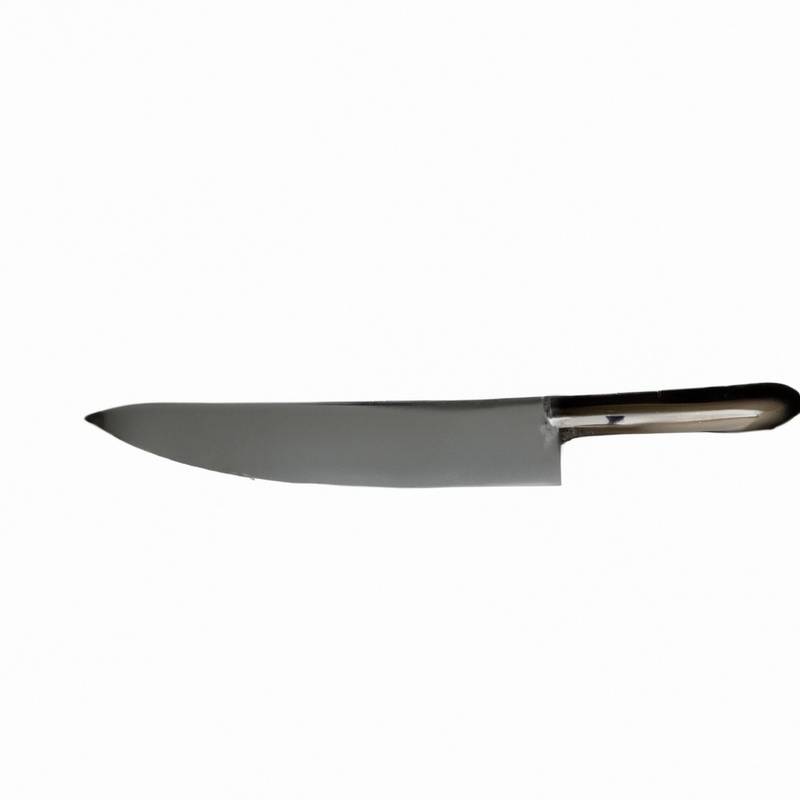
Full Flat Grind and Sharpening Ease
The full flat grind is known for its ease of sharpening. Its simple, straight bevel makes it easy to maintain a consistent angle while sharpening.
With a flat grind, you can use various sharpening methods like sharpening stones or a sharpening system.
Additionally, the thin edge of a full flat grind provides a good balance between sharpness and durability. Overall, the full flat grind is a great choice for those who prioritize ease of sharpening.
Hollow Grind and Sharpening Ease
Hollow grind refers to the concave shape of a blade, which creates a thinner cutting edge. This type of blade geometry can greatly affect the ease of sharpening.
A hollow grind allows for a more precise and controlled sharpening process.
The concave shape helps the sharpener maintain a consistent angle, resulting in a sharper edge. Additionally, less material needs to be removed during sharpening, making the process quicker and easier.
It’s important to note that the width of the hollow grind can also impact sharpening ease.
A wider hollow grind may require more skill and precision during sharpening compared to a narrower one. However, overall, a properly hollow ground blade can make sharpening a breeze.
Heat Treatment and Sharpening
Effects of Heat Treatment on Sharpening Ease
Heat treatment plays a significant role in determining the ease of sharpening a knife.
When properly heat treated, a knife will have a balanced hardness that allows for efficient sharpening.
If the heat treatment is not done correctly, the knife may be too hard, making it challenging to sharpen, or too soft, resulting in quick dulling.
Heat treatment affects both the hardness and the grain structure of the steel, which in turn impacts sharpening ease.
A well-executed heat treatment ensures that the blade retains its sharpness for longer periods, making sharpening easier and more effective.
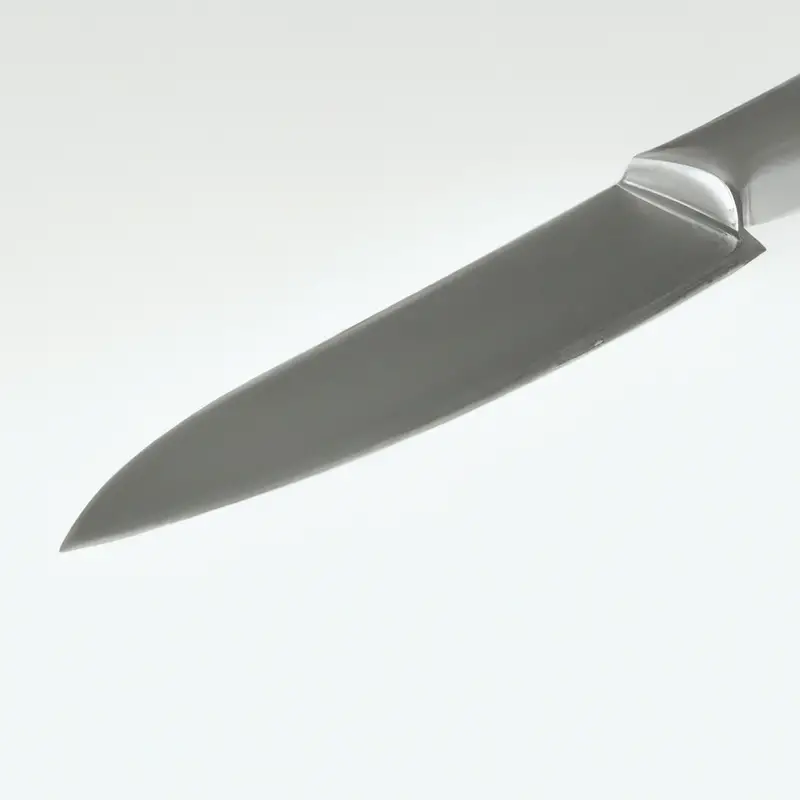
Maintenance Tips for Sharpening Ease
Regular Honing
Regular honing is a key aspect of knife maintenance. It involves using a honing rod or sharpening stone to realign the blade’s edge, keeping it sharp.
Honing removes tiny burrs and inconsistencies that can develop during use.
By honing your knives regularly, you can maintain their sharpness and prolong the time between sharpenings. It’s best to hone your knives before or after each use to keep them performing at their best.
Remember to use proper technique and apply light pressure while honing to avoid damaging the blade.
Happy honing!
Proper Storage
Proper storage of your knives is essential for maintaining their sharpness and overall quality.
Here are some tips to ensure you store your knives correctly:
- Use a knife block or magnetic strip: These options keep your knives securely in place and prevent them from rubbing against other utensils, which can cause damage.
- Consider a knife sheath or blade guard: These protective covers add an extra layer of protection, preventing accidental cuts and scratches during storage.
- Store knives separately: Avoid overcrowding your knife storage area. This prevents blades from accidentally rubbing against each other and becoming dull.
- Keep knives dry: After using or cleaning your knives, ensure they are completely dry before storing them. Moisture can lead to rust and corrosion, affecting both the performance and lifespan of your blades.
- Store knives in a cool, dry place: Avoid storing knives in high humidity areas or near heat sources. Extreme temperatures can warp the blade and affect its sharpness.
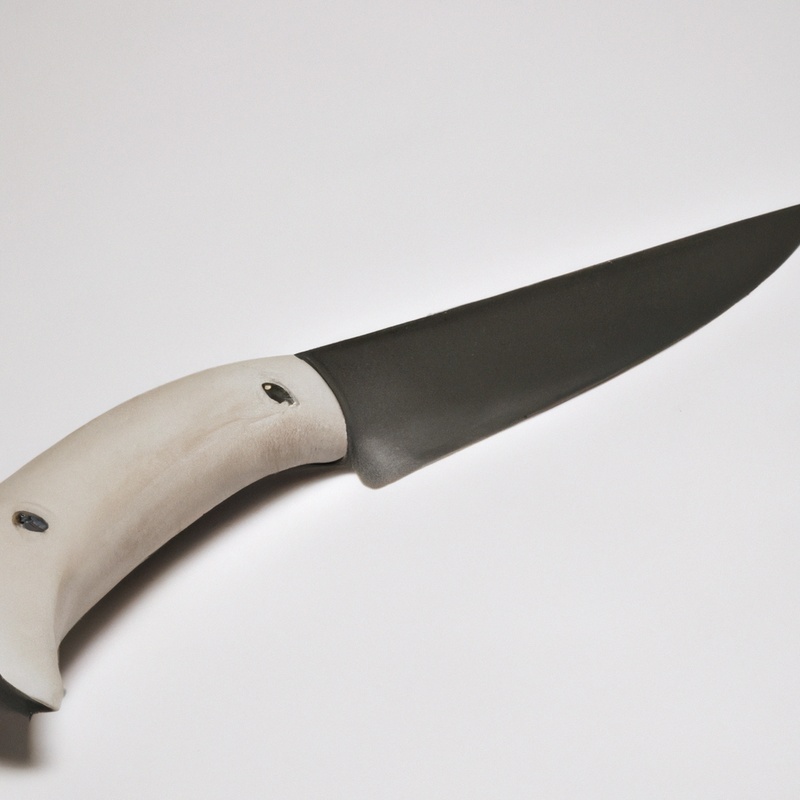
Correct Sharpening Techniques
Correct sharpening techniques are essential for maintaining the sharpness of your knife. Here are a few key techniques to keep in mind:
- Maintain consistent angle: When sharpening, make sure to maintain a consistent angle between the blade and the sharpening stone. This ensures an even and effective sharpening process.
- Use the right grit: Start with a coarse grit stone to remove any dullness or nicks, and then progress to finer grit stones for a polished edge.
- Apply even pressure: Apply even pressure along the entire length of the blade when sharpening. This helps to achieve a uniform and sharp edge.
- Follow the blade’s contour: When using handheld sharpeners, follow the contour of the blade. This helps to maintain the original shape of the blade while sharpening.
Remember, practice makes perfect. With time and experience, you’ll find the correct sharpening technique that works best for you and your knives.
Happy sharpening!
Final Verdict
Understanding the composition of knife steel is crucial in determining the ease of sharpening.
Factors such as hardness, steel type, blade geometry, and heat treatment all play a role in sharpening ease.
High carbon steel tends to be easier to sharpen, while stainless steel requires more effort.
Blade geometry, such as thin blades and full flat grinds, can also impact how easy a knife is to sharpen.
Proper maintenance, including regular honing and correct sharpening techniques, is essential for maintaining the sharpness of your knives.
By considering these factors and implementing proper maintenance practices, you can ensure that sharpening your knives becomes a simple task.

